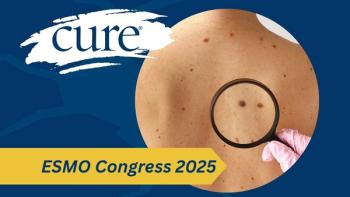
Cancer's Dirty Little Secret
Breast cancer can bring the surprise of lymphedema to the unsuspecting, uniformed patient.
After I was diagnosed with stage 2b invasive ductal carcinoma, I was told I needed to have my breasts removed. I met with the breast surgeon and discussed options available to me. After processing what I’d been told, I accepted what was to be. I went through the recommended surgery and treatment afterward.
Everything seemed to be going as well as could be expected, but a few weeks after surgery, I noticed some strange swelling in my upper arms. I didn't think much about it and assumed it was a result of having not only my breasts removed, but also lymph nodes in each arm. Recovery was long and both physically and emotionally draining. I made a concerted effort to move on with my life. I made the necessary adjustments and learned to accept my physical limitations. The swelling progressed, and I noticed that as I went throughout my daily routine, it became more pronounced. I began to get concerned and contacted my doctor. Upon examination, she told me I was suffering from lymphedema. I’d never heard of this malady before and asked her to explain. She said many women experience a disruption in the lymphatic system after having surgery for breast cancer where lymph nodes were removed. Dumbfounded, I wondered why neither my breast surgeon, my radiation oncologist nor my oncologist had ever mentioned the possibility of lymphedema to me. I was extremely upset and went home from my appointment determined to find answers.
I began to do research on the internet. I read anything and everything I could find on lymphedema. I was surprised to find that there was not a lot of information available and wondered why. Surely this was not a new condition. There should be information readily available. As I continued my search, I came across an informative
Lymphedema, according to the
Primary lymphedema occurs in people born with genes that put them at an increased risk of developing lymphedema. This lymphedema is caused by lymph nodes or vessels that are missing or not working the way they should. This type of lymphedema is rare.
Secondary lymphedema is a result of cancer, cancer treatments, tumors, diseases or anything that changes or damages the normal, healthy lymph system.”
After reading this information, I realized I was suffering from secondary lymphedema. Since having lymph nodes removed, the pathway my lymphatic fluid normally traveled had been disrupted. The fluid didn't follow the normal channels any longer and fluid was collecting in other parts of my body. The swelling in my upper arms got worse throughout the day. Physical activity exacerbated the swelling causing great discomfort and pain. My mobility was limited and I knew I needed to talk to my doctor about it.
My research continued, and I found I wasn't the only one wondering why lymphedema was kept quiet. Kathy Bates, a well-known actress and Oscar winner, wondered the same thing. When she suffered lymphedema after her breast cancer diagnosis and having a double mastectomy performed, she decided she wanted to participate in lymphedema awareness. She was asked to become the spokesperson for
I scheduled a visit with my breast surgeon and asked her to look at my upper arms. She noted the extreme swelling and confirmed lymphedema. She prescribed compression sleeves and asked me to visit a therapist trained in manual lymphatic drainage. I went to the physical therapy and rehab center where I was massaged, wrapped and sent home with instructions on how to perform manual lymphatic drainage on myself. I did pretty well for a few months, but soon noticed the swelling returning and getting worse. Once again, I contacted my doctor. This time I was prescribed a recirculating compression pump. A therapist came to my home and demonstrated the equipment but weeks later, my insurance company refused to pay for the equipment, stating it was medically unnecessary. Frustrated and bewildered, I contacted my oncologist. I wasn't surprised when I was sent back to the physical therapy department for more sessions with the certified lymphatic masseuse. After completing another round of treatment sessions, I went home.
Every day I wake up and before dressing, I give myself manual lymphatic massage. After spending fifteen to twenty minutes on each arm, I don my compression sleeves and go about my daily routine. Usually I do well for the first few hours but as the day progresses, I can feel the familiar heaviness and swelling in my limbs indicating the lymphedema is still with me and always will be.
I wish the doctors had taken time to talk to me about the possibility of lymphedema when I was having my sentinel node biopsy performed. If I’d known the risks, I would have probably refused to have allowed them to remove as many lymph nodes as they did. I think doctors should spend more time discussing the after effects of surgery with their patients. Knowing the risks involved would have helped me make a more informed decision and would have possibly prevented me from developing lymphedema.
Lymphedema has affected not only my physical abilities, it’s also affected my self-esteem. I find myself avoiding public settings for fear of being ostracized. I don’t like having to wear my sleeves out in public. It’s embarrassing to have people stare and wonder why I’m wearing them. I don’t enjoy having to explain my condition to complete strangers. Lymphedema…cancer’s dirty little secret…is the information we aren't told in advance. I don’t like secrets and never have liked them. Didn't someone say once that honesty is always the best policy? Come on medical professionals! Share information with your patients! Isn't that what you’re supposed to do?
At least I know I’m not the lone ranger. I know there are many out there suffering from primary and secondary lymphedema. We can’t help our swollen arms and legs, so please don’t stare. Ask and we'll tell you what we know, but there’s still a lot to learn. Research is being done and hopefully, there will be great medical advancements made in the years to come. If you have lymphedema and would like to participate in the research being done through Stanford University of Medicine, you can join the national registry





